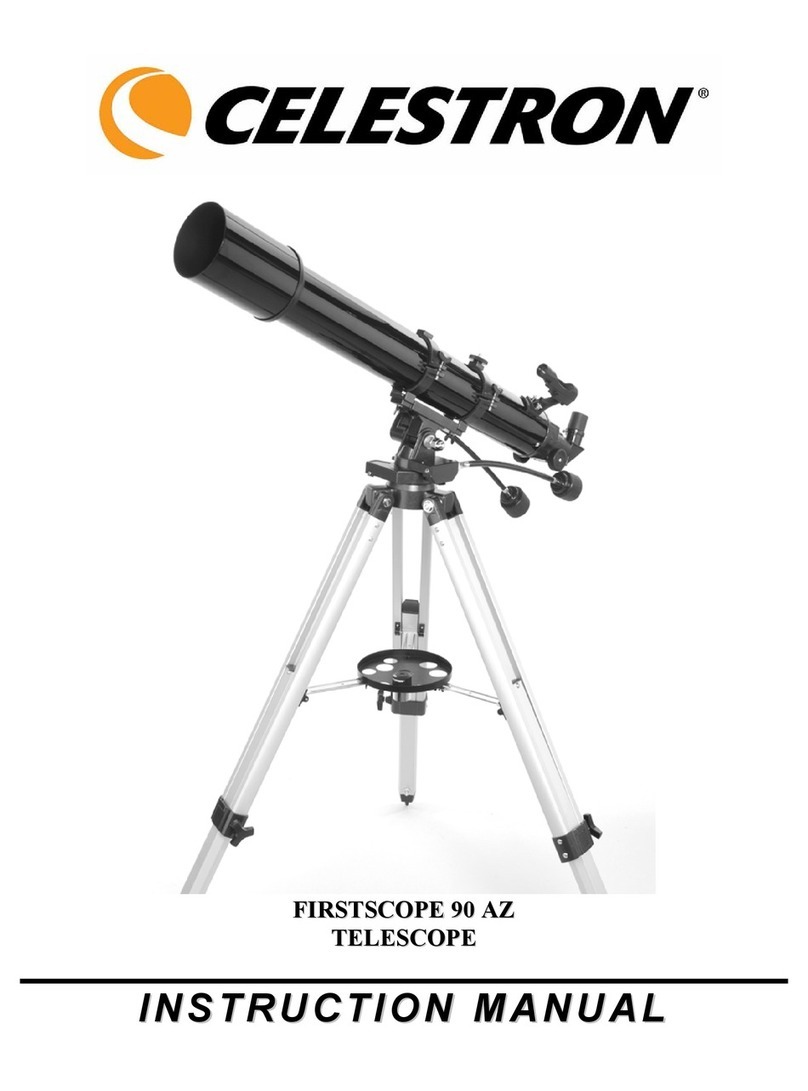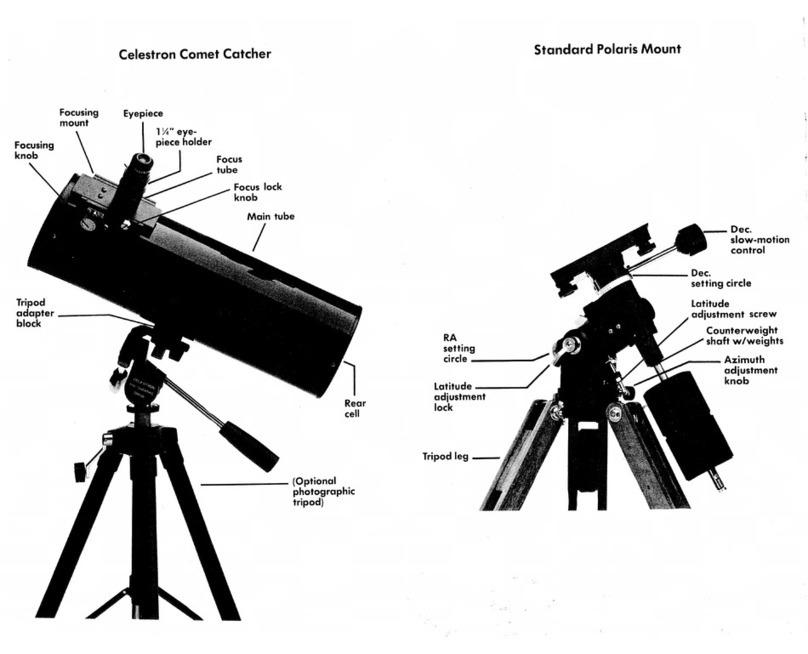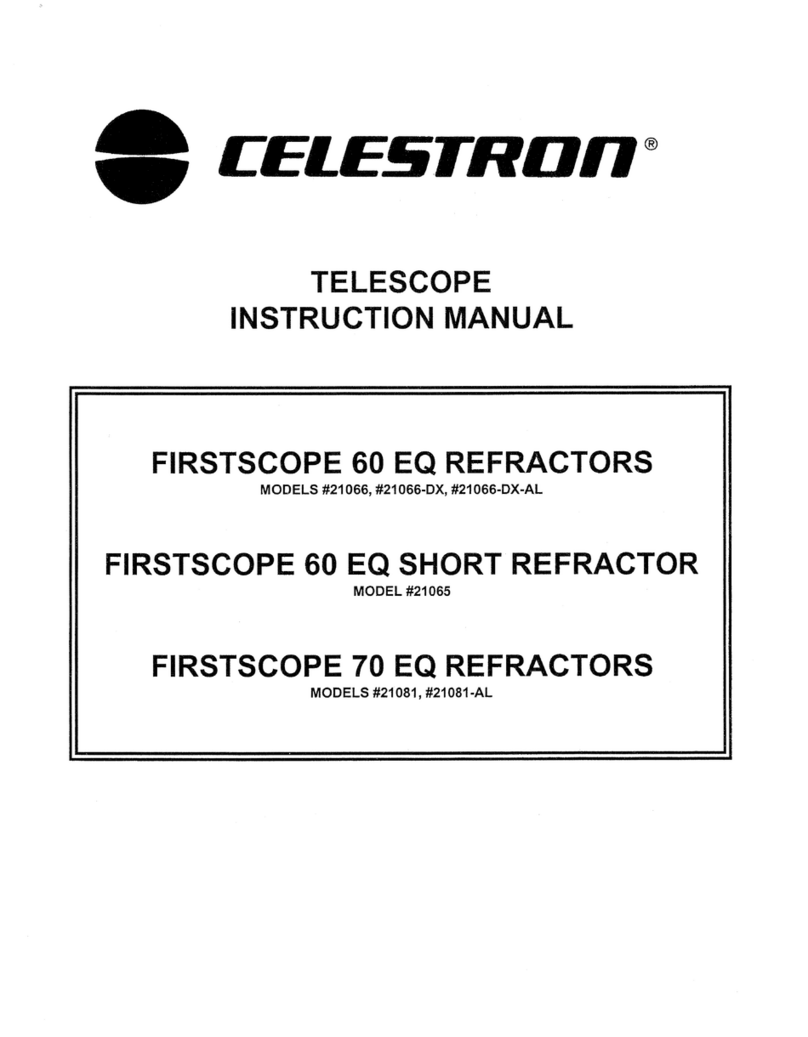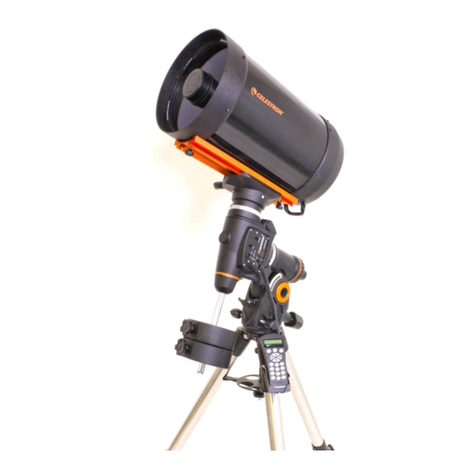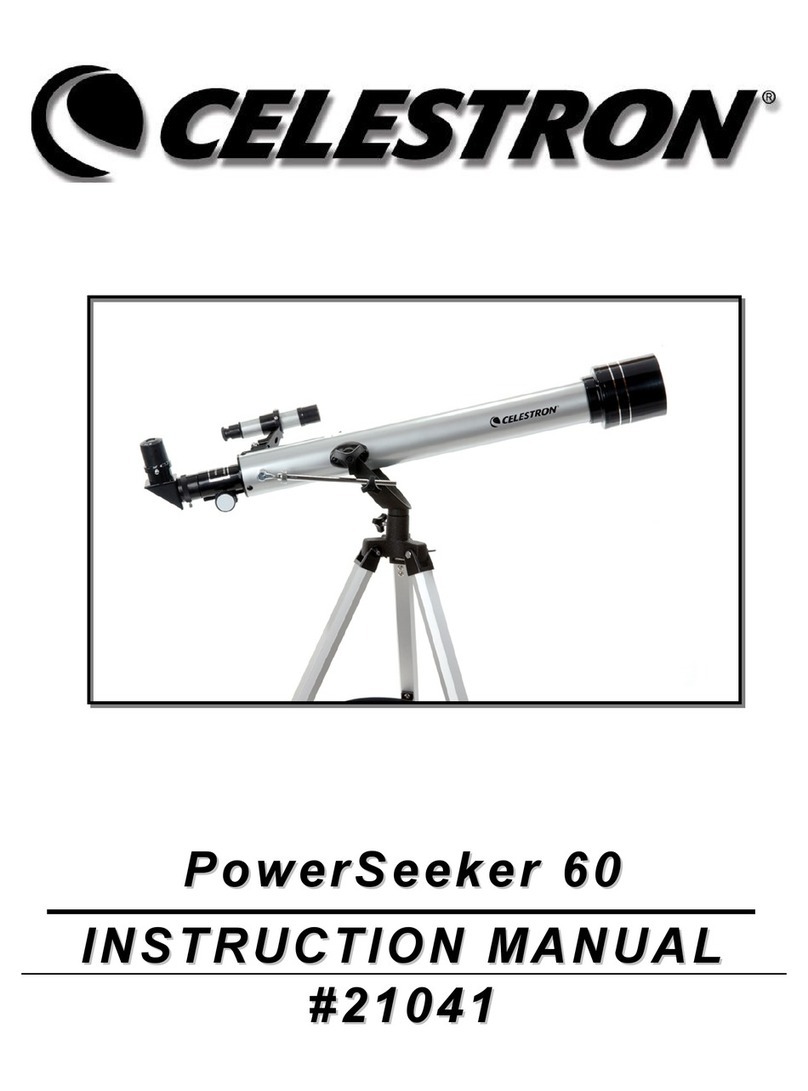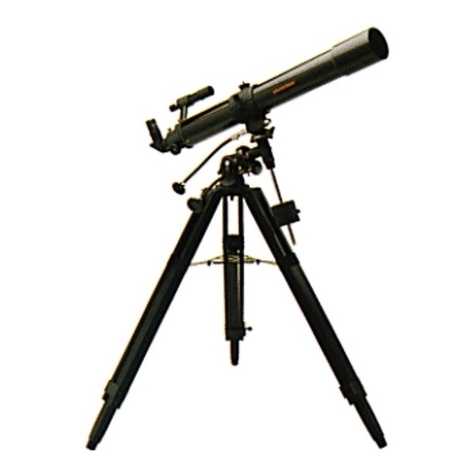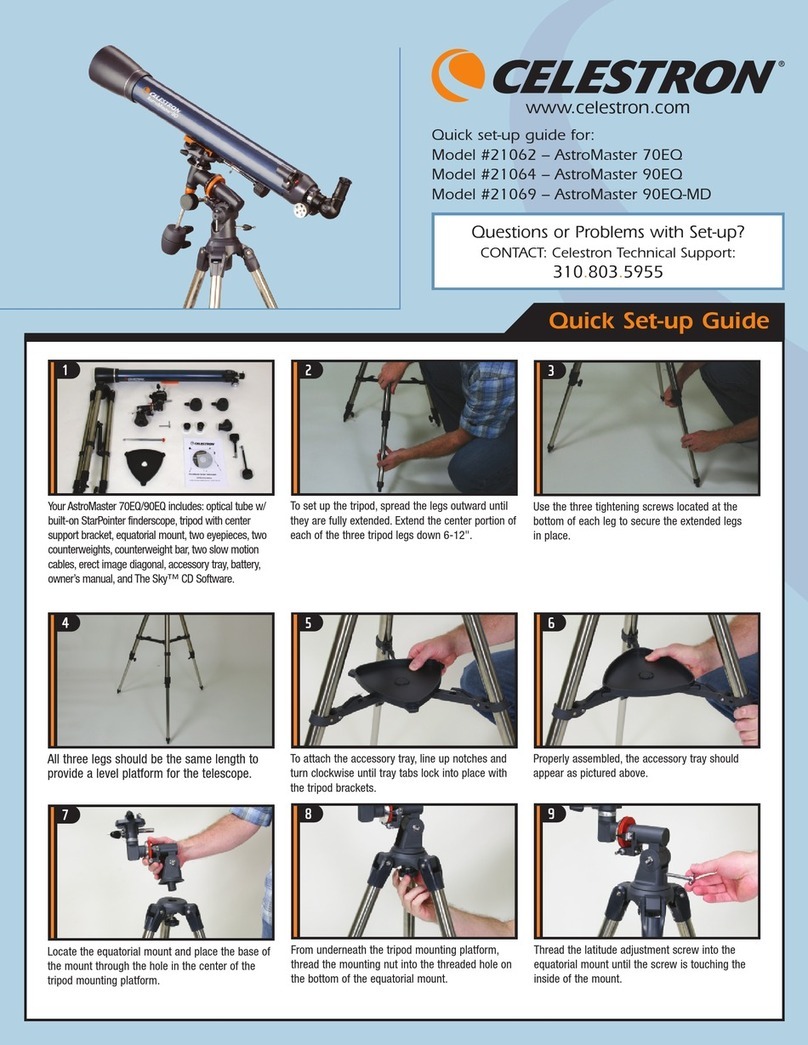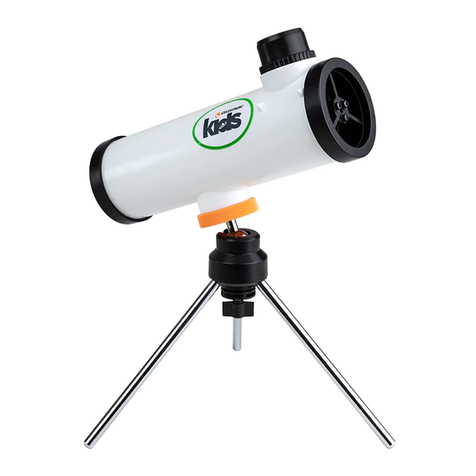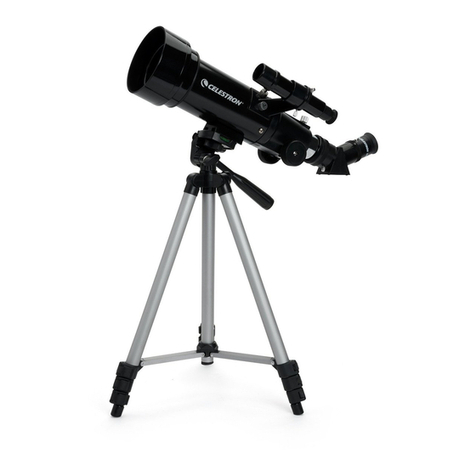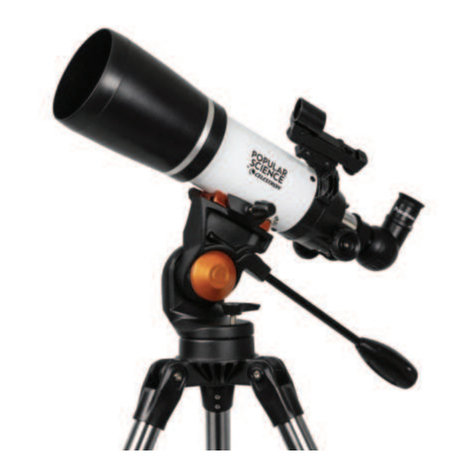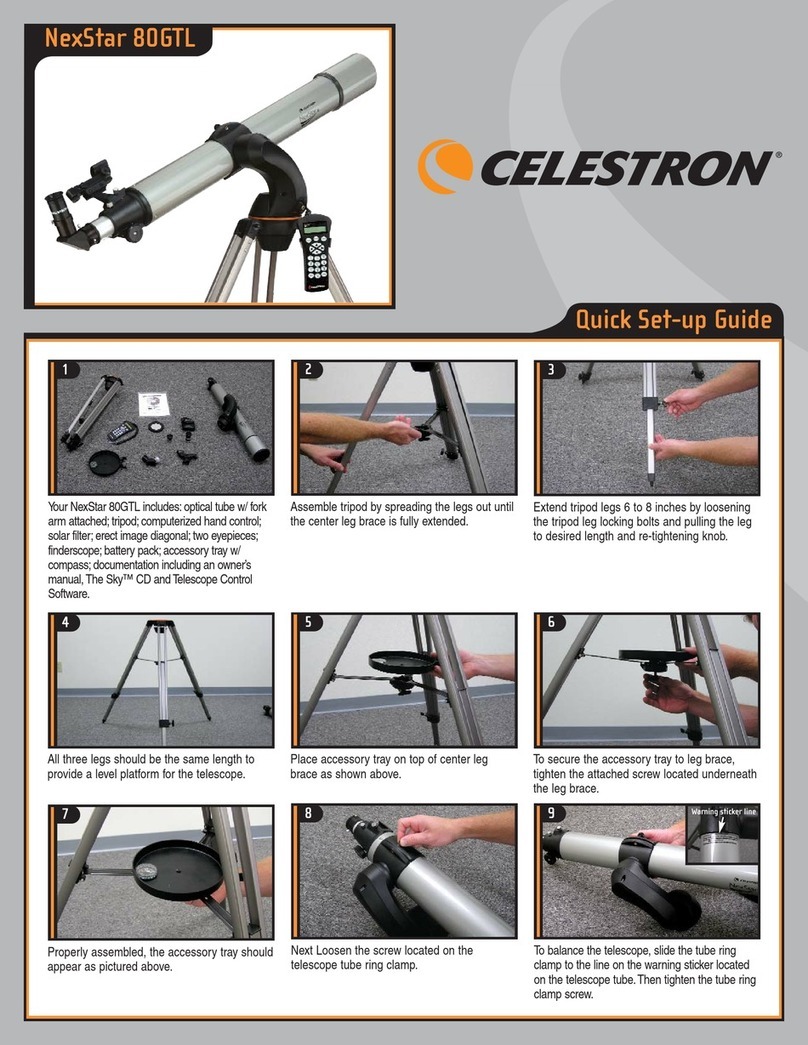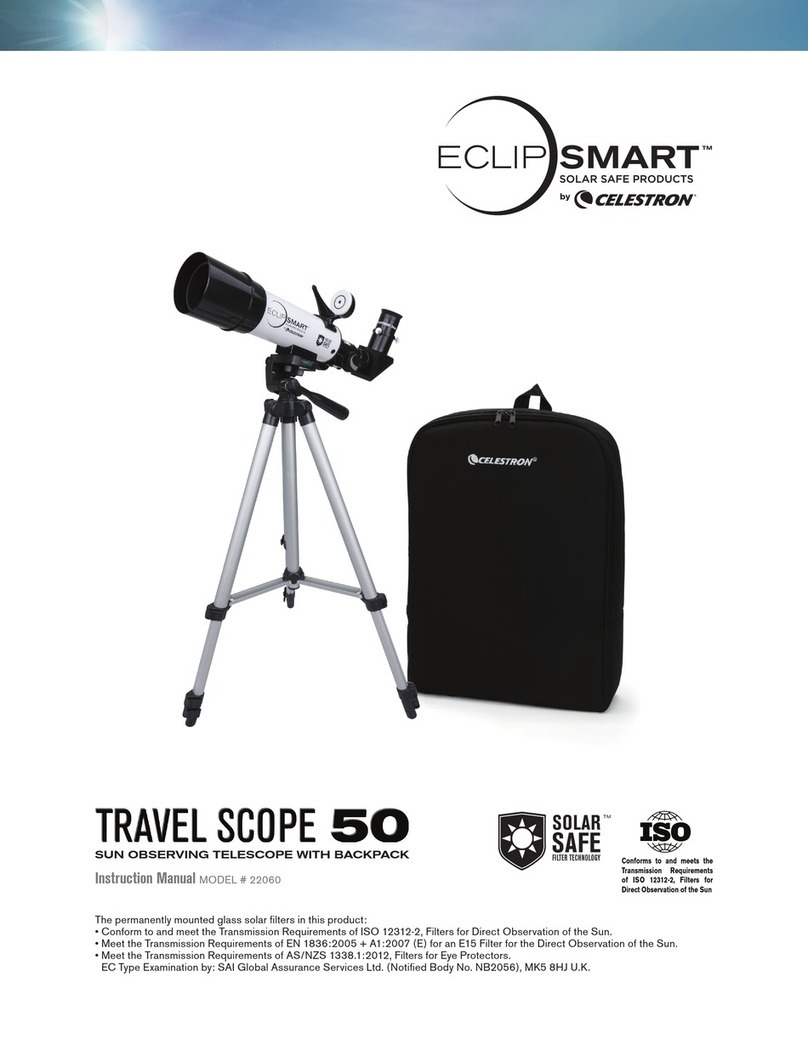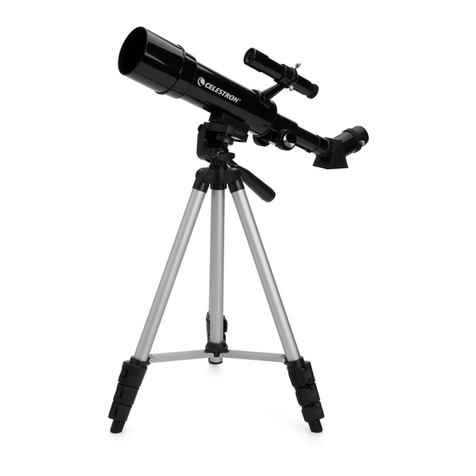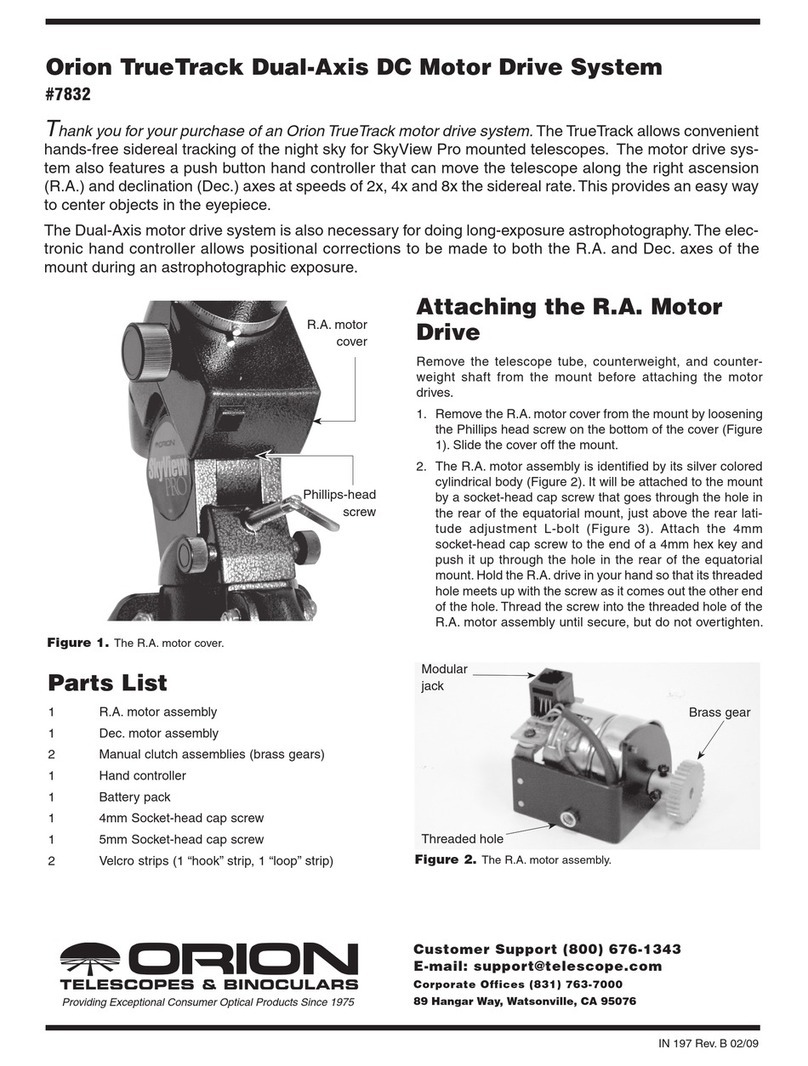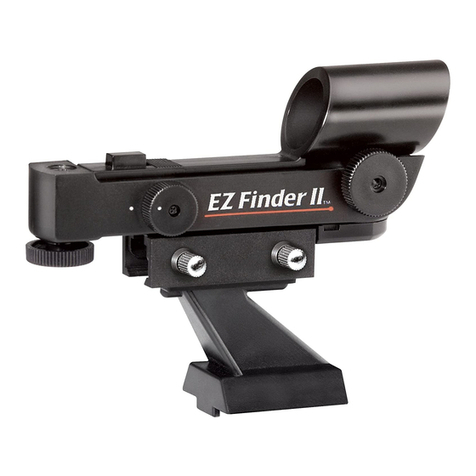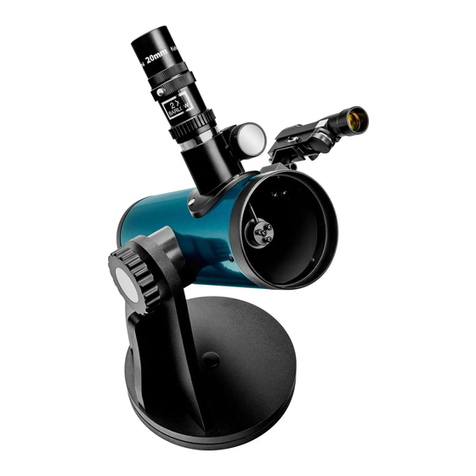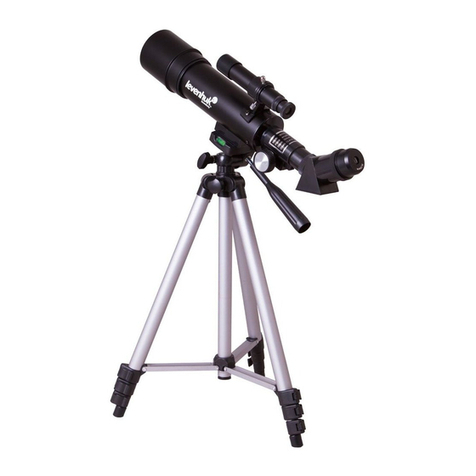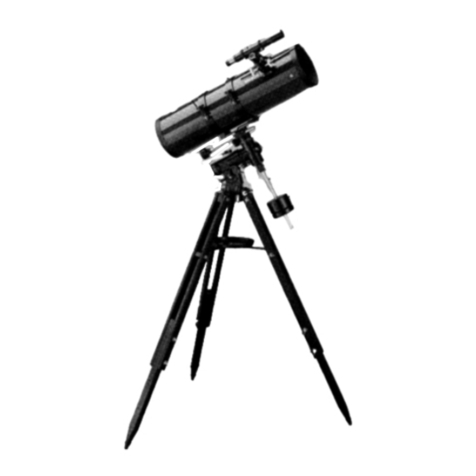10 I
Balancing the Mount in R.A.
To eliminate undue stress on the mount, the telescope
should be properly balanced around the polar axis. Proper
balancing is crucial for accurate tracking. To balance the
mount:
1. Verify that the telescope is securely attached to the
telescope mounting platform.
,OOSENTHE2!LOCKLEVERANDPOSITIONTHETELESCOPE
off to one side of the mount. The counterweight bar will
extend horizontally on the opposite side of the mount.
3. Release the telescope — GRADUALLY — to see which
way the telescope “rolls.”
,OOSENTHESETSCREWSONTHESIDEOFTHECOUNTERWEIGHT
so it can be moved the length of the counterweight bar.
5. Move the counterweight to a point where it balances the
telescope (i.e., the telescope remains stationary when
the R.A. clutch knobs are loose).
6. Tighten the screw on the counterweight to hold it in
place.
Tip: While the above instructions describe a perfect balance
ARRANGEMENTTHERESHOULDBEA3,)'(4IMBALANCETO
ensure the best possible tracking. When the scope is
on the west side of the mount the counterweight should
be slightly imbalanced to the counterweight bar side.
And when the tube is on the east side of the mount
there should be a slight imbalance toward the telescope
side. This is done so that the worm gear is pushing
against a slight load. The amount of the imbalance
is very slight. When taking astroimages, this balance
process can be done for the specific area at which
the telescope is pointing to further optimize tracking
accuracy.
Balancing the Mount in DEC
Although the mount does not track in declination, the telescope
should also be balanced in this axis to prevent any sudden
motions when the DEC lock lever is loose. To balance the
telescope in DEC:
,OOSENTHE2!CLUTCHLOCKLEVERANDROTATETHETELESCOPE
so that it is on one side of the mount (i.e., as described in
THEPREVIOUSSECTIONONh"ALANCINGTHE-OUNTIN2!v
2. Tighten the R.A. lock lever to hold the telescope in place.
,OOSENTHE$%#CLUTCHLOCKLEVERANDROTATETHE
telescope until the tube is parallel to the ground.
4. Release the tube — GRADUALLY — to see which way it
rotates around the declination axis. DO NOT LET GO OF
THE TELESCOPE TUBE COMPLETELY!
5. Slightly loosen the knobs that hold the telescope to
the mounting platform and slide the telescope either
forward or backward until it remains stationary when the
DEC clutch is loose. Do NOT let go of the telescope
tube while the knob on the mounting platform is loose.
It may be necessary to rotate the telescope so that the
counterweight bar is pointing down before loosening the
mounting platform screw.
6. Tighten the knobs on the telescope mounting platform
to hold the telescope in place.
,IKE2!BALANCETHESEAREGENERALBALANCEINSTRUCTIONS
and will reduce undue stress on the mount. When taking
astroimages, this balance process should be done for the
specific area at which the telescope is pointing.
Adjusting the Mount
In order for a motor drive to track accurately, the telescope’s
axis of rotation must be parallel to the Earth’s axis of rotation,
a process known as polar alignment. Polar alignment is
achieved NOT by moving the telescope in R.A. or DEC but
by adjusting the mount vertically, which is called altitude and
horizontally, which is called azimuth. This section simply cov-
ers the correct movement of the telescope during the polar
alignment process. The actual process of polar alignment, or
making the telescope’s axis of rotation parallel to the Earth’s,
is described later in this manual in the section on “Polar
Alignment.”
Adjusting the Mount in Altitude
s4OINCREASETHELATITUDEOFTHEPOLARAXISTIGHTENTHEREAR
latitude adjustment screw and loosen the front screw.
s4ODECREASETHELATITUDEOFTHEPOLARAXISTIGHTENTHEFRONT
latitude adjustment screw (located below the counter-
weight bar and loosen the rear screw.
The latitude adjustment on the Advanced VX mount has a
range from approximately 7° to 77°.
Azimuth
Adjustment
+NOBS
,ATITUDE
Adjustment
+NOBS
